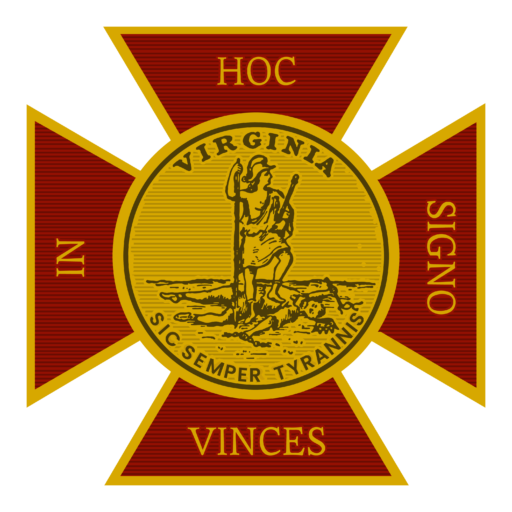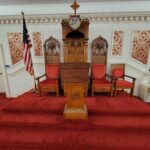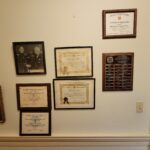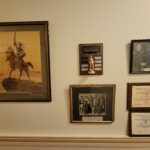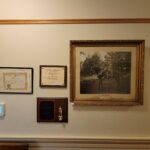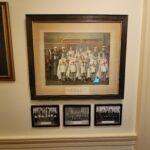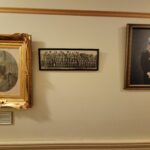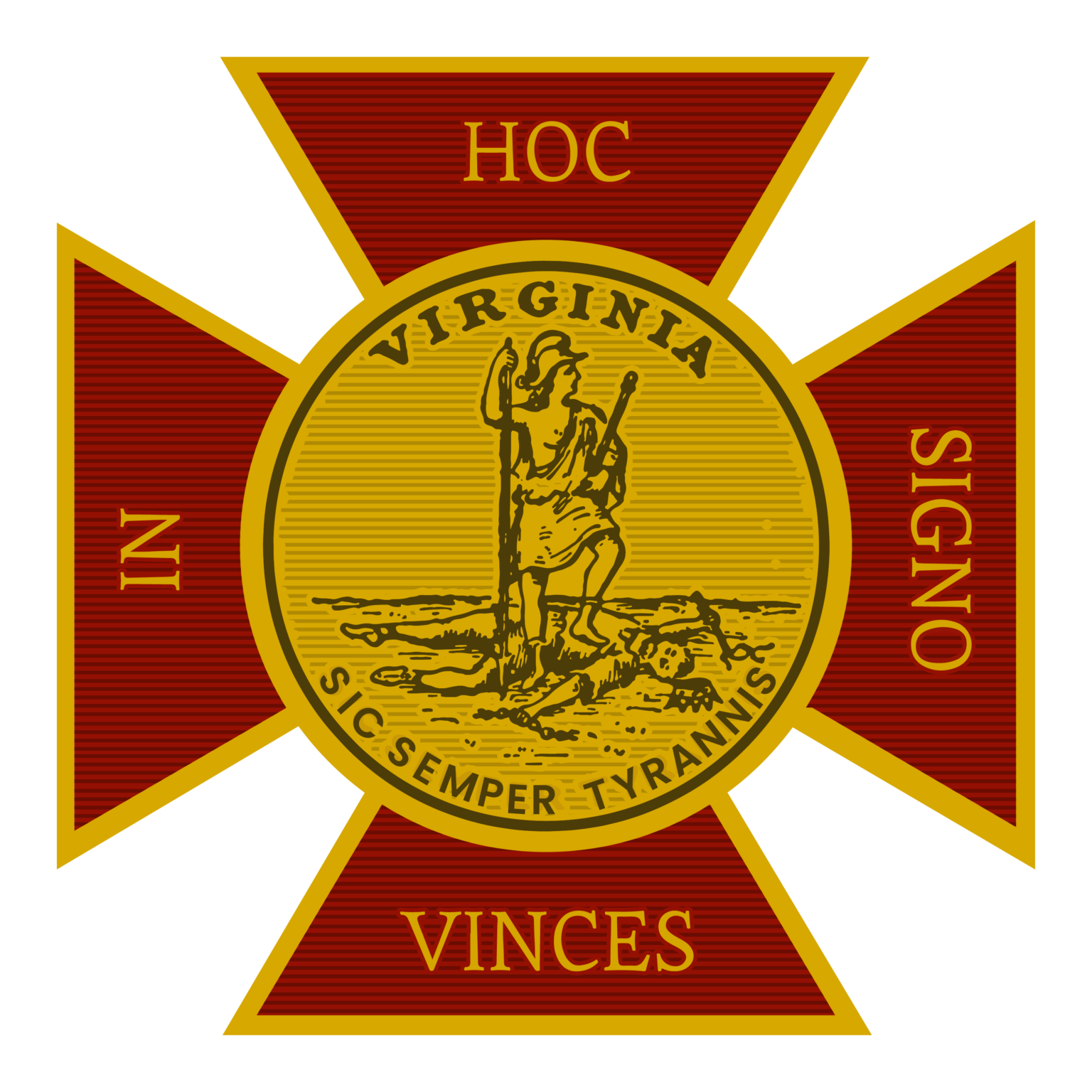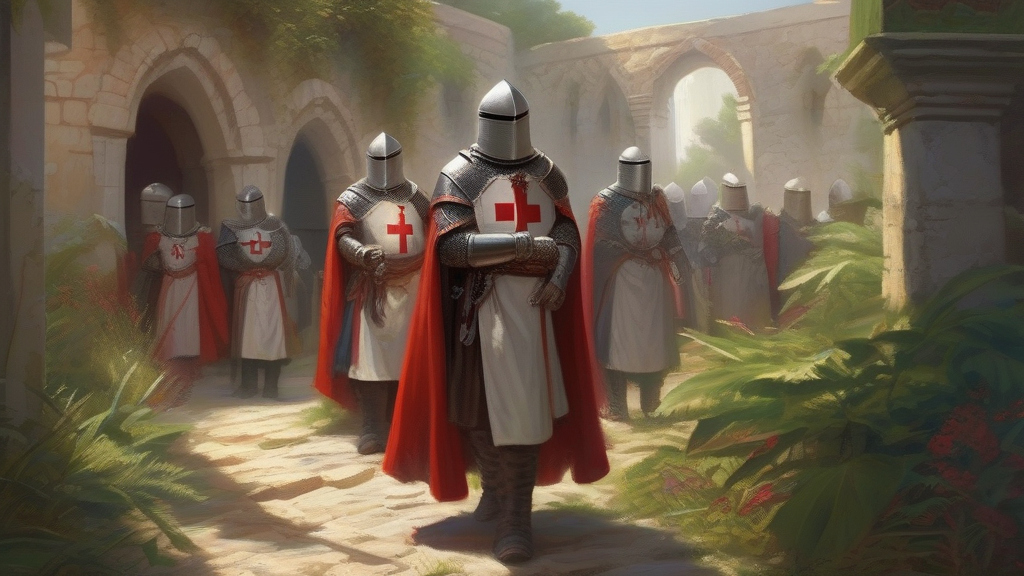Chartered July 5, 1824
The Masonic fraternity of Virginia, and particularly the Grand Commandery of Virginia, will learn with more than ordinary interest that an encampment of Knights Templar was regularly instituted in this Commonwealth at least ten years before the institution of the Grand Commandery at Richmond on Nov. 27, 1823. This fact, strange as it may appear, is an interesting piece of Masonic history worthy of more than passing notice. It is indeed a great portion of early Virginia Commandery history too. To understand the story of Templary in Winchester, all should bear in mind that all the minutes and records of Winchester Commandery prior to the year 1900 have disappeared with time. The city was ravaged by the Civil War and the reconstruction period that followed in the second half of the 19th Century. Still, hard evidence remains that proves that there was an Encampment of Knights Templar at Winchester as early as 1813, which worked under the authority of the old Winchester Lodge No. 12 chartered to the Grand Lodge of Pennsylvania, Antient York Masons on October 1, 1768. It is also reasonably assumed that the various members of the early Commandery at Winchester had received their Templar Orders from Pennsylvania beginning around the year 1810. By the year 1812, a decision was reached to form the Winchester Encampment of Knights Templar independent of the symbolic lodge and it became a self constituted and self-congregated group. The first men created Knights Templar at Winchester Encampment were Robert L. Bealy and Robert Maloney who were knighted on May 4, 1813. This establishment was four years before the organization of the General Grand Encampment of the United States and St. John’s Rising Star Encampment in Richmond which were both founded in the year 1816. It was also 11 years prior to the formation of the Grand Commandery of Virginia. Within a decade of its formation, Winchester Encampment granted warrants to Warren Encampment in Harper’s Ferry and Mt. Carmel Encampment in Warrenton. Right Eminent Daniel Walker Thomas wrote Grand Master of the Grand Encampment, DeWitt Clinton, on June 17, 1824, and was sanctioned favorably, but he elected to maintain his own Grand Encampment status on November 27, 1824, after being solicited to request a new warrant or charter of constitution for a $90.00 fee. The two bodies would eventually come to a mutual agreement and Daniel Walker Thomas was elected the first Grand Commander with numbering allotted to Winchester Encampment’s first three Commanderies Winchester No. 1, Warren No. 2, and Mt. Carmel No. 3.
Grand Master DeWitt Clinton again wrote Daniel Walker Thomas in 1824 stating the following: “As you Encampment was established before the General Grand Encampment, I do not perceive the necessity of your taking out charters or dispensations; it would be, in my opinion, an unnecessary expense. If you have three Encampments, I think it will be advisable for you to form a State Grand Encampment, and for that body to send me an instrument acknowledging the jurisdiction of the General Grand Encampment, in which case I will acknowledge you as a regularly constituted State Encampment, until the General Grand Encampment shall at their next meeting take order on the subject. This measure will save expense and trouble and be in all respects proper.”
At a Special Assembly held in Winchester on March 23, 1825, a reorganization of the Grand Encampment of Virginia was formed. Daniel Walker Thomas continued as Grand Master and Dr. John Dove was made Deputy Grand Master. Thomas continued in that role until November of 1829 when he was succeeded by Charles Augusta Grice of Portsmouth Encampment No. 5. Rt. Eminent Grice was the first figure to be labeled the “Grand Commander” and the Annual Assembly was then removed to Petersburg, VA in 1830.
In the roughly 40 years following this period until the close of the Civil War, Winchester Encampment remained for the most part dormant. It was then revived in 1870 by local judge, John Bell Tilden Reed, who served as Commander. From that point in history on, a successful chain of custody and leadership extends to the present day.
On March 2, 1900, while workers were tearing down the old brick building known as the Market House on the public square in downtown Winchester to make way for the new Rouss City Hall, they discovered an old lead box in the northeast corner. As the Masons since Lord Fairfax’s time had occupied an apartment on that site, it was turned over to them and opened. The old box was found to contain numerous Masonic emblems and documents, chief among which was the following, this being an exact copy as regards both punctuation and spelling:
A list of the Officers and Members of Winchester Grand Encampment of Sir Knight Templars. No. 1, Held in the Fields of Winchester, State of Virginia. Founded Anno Domini 1813, Anno Luces 5813, and in the Era of Sir Knight Templars 831.
OFFICERS
Most Excellent Sir Knight Daniel Walker Thomas, Esq., Grand Generalissimo.
Reverend Sir Knight George Reed, Excellent Grand Captain General.
Excellent Sir Knight Lemuel Bent, Esq., Grand Captain of the Host.
Excellent Sir Knight Peter Lauck, Grand Standard Bearer.
Excellent Sir Knight Conrad Kremer, Grand Marshal.
Excellent Sir Knight Samuel H. Lauck, Grand Registrar.
Excellent Sir Knight James Hill, Grand Treasurer.
Excellent Sir Knight James Foster, Grand Sword Bearer.
MEMBERS
Sir Robert Maloney, Sir William Kelley,
Sir Henry Severs, Sir John A. Haupe,
Sir William P. Helm, Sir Warner Throckmorton, Esq.,
Sir Dolphin Drew, Esq., Reverend Sir Norman Nash,
Sir William Herrin, Sir Abraham Lang,
Sir Jacob R. Thomas, Sir Joseph P. Thomas,
Sir Presley Marmaduke, Sir William W. Blanchard,
Sir Isaac Hershell, Sir John Denton,
Sir Edward Jackson, Sir Philip Klipstine,
Sir John Wilson, Sir John R. Heyden,
Sir Cyrus B. Baldwin, Sir John Kern,
Sir James Keller.
Deposited, (together with a Triangle, Cross and Star-Jewels of our Order on the thirtieth day of the Seventh Month called July,) Anno Domini 1821; Done by Order of our Said Encampment at Winchester.
D. W. Thomas, M. E. G. G. L.
Attest: George Reed, E. G. C. G.
Samuel H. Lauck, E. G. R.; Lemuel Bent, E. G. C. H.
The object of this deposite is to shew to some future Age, that the science of Free Masonry is in a flourishing state, not being Trameled with Governmental fetters as in Ages past— It is also designed to shew that the Religion of Jesus Christ is flourishing and fast gaining ground on Heathenism which has for so many Cen turies Inveloped the world in gross darkness and Idolitrey. It is hoped when these lines shall again be Exhibited to the Human Eye; it will be high Meridian of Gospel day., when the Glorious Sun of Righteousness shines forth its refulgent beams to Earth’s remotest bounds, and all the Inhabitants bow to the mild Ceptre of the all Glorious Emmanuel— That the Great God of the Universe may hasten the time is the prayer of Daniel Walker Thomas, Esq., Most Excellent Grand Generalissimo of the Grand Encampment of Virginia, held in the Fields of Winchester. Thirtieth day of the seventh
Month (called July) Anno Domini 1821, Anno Luces 5821, and in the Era of Sir Knight Templars 839.
Amen.
The original copies of the old documents, now housed in the Winchester Masonic Museum within the Winchester Masonic Temple on Loudoun Street, give the Templars of the historic valley city of Winchester a more conspicuous place among the Sir Knights of Virginia. The record proves the existence of an organized body of Templars in Virginia ten years before the formation of the Grand Commandery and gives Winchester Commandery the honors of age in the grand jurisdiction. It has been discovered that the Winchester Templars played an especially important part in the early history of the order of Christian Knighthood in Virginia. The Grand Commandery, as already stated, was organized on November 27, 1823, in Richmond, yet its first Grand Commander was the same Right Eminent Sir Daniel Walker Thomas, whose occupation was that of a furniture craftsman in Winchester. He was the first illustrious patron of our valiant and magnanimous order in Virginia. He continued in office from 1823 to 1830. Sir Knights Peter Lauck, Solomon Heister, and Peter Lauck,
again, served as Grand Treasurer from 1823 to 1830, and Sir Knights Sutton I. Harris and Samuel H. Davis were Grand Recorders until 1830. After that date, until the early 20th Century, no Winchester citizens appear as officers of the Grand Commandery.
The recorded timeline and evolution of Winchester Commandery No. 12:
1812: Formation of Winchester Encampment No. 1
1813-1830: Active as Winchester Encampment No. 1
1830-1835: No Records Survive
1835-1838: There were no Annual Assemblies
1839: Present at Annual Assembly as Winchester Encampment No. 1
1840-1844: There were no Annual Assemblies
1845-1860: Dormant
1861-1870: Present at Annual Assembly as Winchester Commandery No. 11
1871- Present: Present at Annual Assembly as Winchester Commandery No. 12
Sir Knights of Winchester Commandery No. 12 who have served with distinction:
Grand Commander of Virginia:
Daniel Walker Thomas (1823 – 1830)
Frank Talbot McFaden (1907-1908)
Alexander Mantz Baker (1912-1913)
Charles Vernon Eddy (1925-1925)
Robert Glass Smallwood (1990-1991)
Jeffrey Glen Burcham (2008-2009)
Joel David Ratliff, Sr. (2018-2019)
Dennis Mark Haas (2023-2024)
Grand Commander of Washington, District of Columbia:
James Winfield Golladay, Jr. (2011-2012)
Grand Treasurer:
Peter Lauck (1823-1824, 1825-1830)
Solomon Heister (1824-1825)
Grand Recorder:
Sutton I. Harris (1823-1825)
Samuel H. Davis (1825-1830)
Charles Vernon Eddy (1929-1959)
Department Commander, Mid-Atlantic Department, Grand Encampment of KT USA:
Jeffrey Glen Burcham (2012-2015)
James Winfield Golladay, Jr. (2015-2018)
WORKS CITED
The American Tyler Keystone, Volume XVI, Number 22 (May 15, 1902) – Tyler Publishing Co. – Ann
Arbor, Michigan
Freemasonry in Winchester, Virginia, 1768-1948 by William Moseley Brown (1949) – McClure
Printing Co. Staunton, Virginia
Proceedings of the Grand Commandery or Knights Templar Masons of Virginia 1823-1871 (2018) The
George Washington Masonic National Memorial Association – Masonic Digital Archives Project –
Washington, District of Columbia
By Sir Knight Jason Curtis ‘Jake’ Trenary, Knight Commander of the Temple

